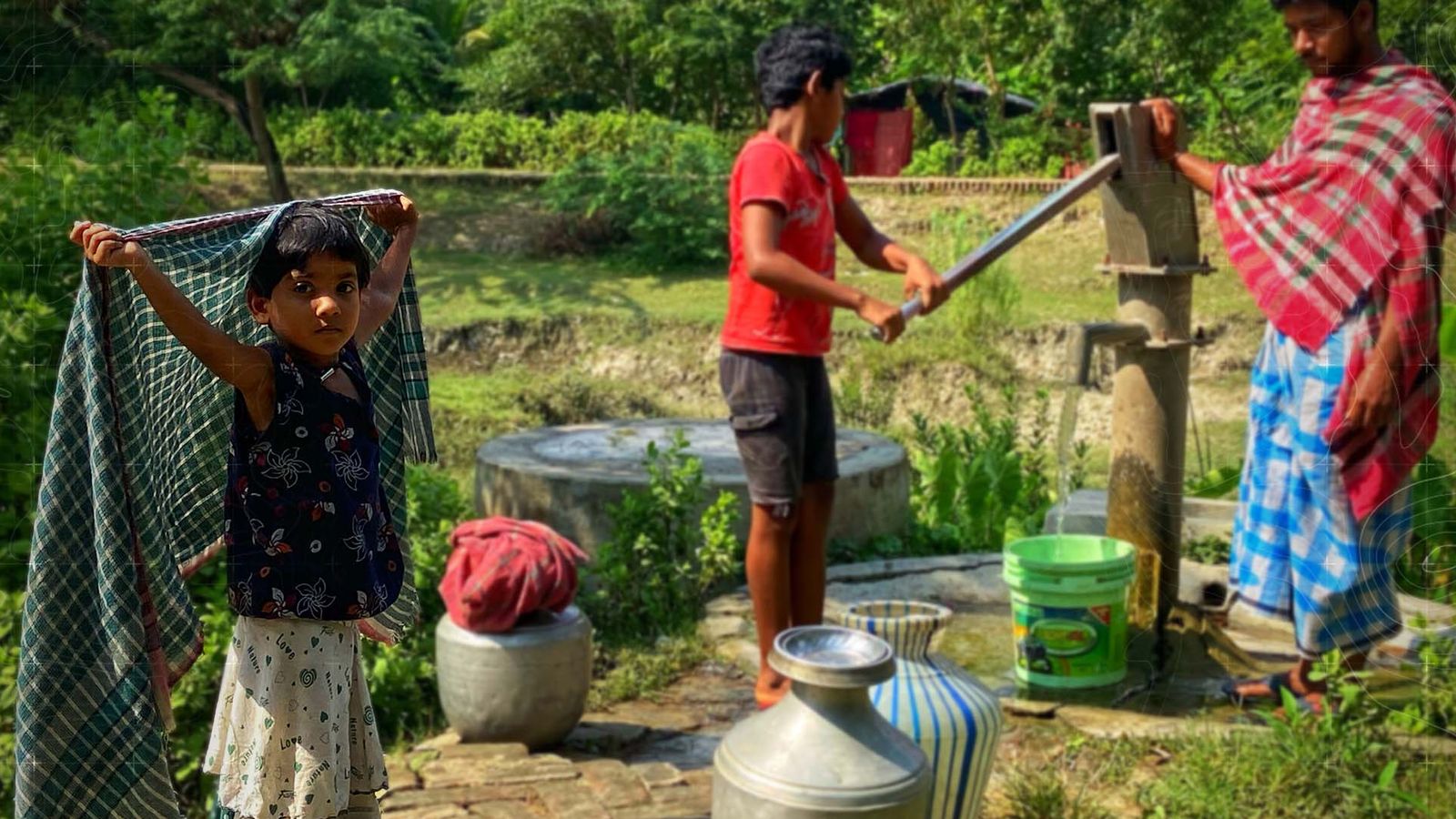TL;DR
- Ardently affected by climate change, Arun Pramanik and others from the Sundarbans are facing the harsh realities of disappearing lands and homes, with Ghoramara Island shrinking rapidly.
- Many families, like Deepak Patra’s, have been forced to relocate multiple times due to rising waters, frequent cyclones, and flooding, leading to the designation of India’s first climate refugees.
- Living conditions are dire, with Ghoramara’s inhabitants lacking basic amenities like running water and electricity, prompting urgent need for government assistance as they prepare to relocate again.
India’s first climate refugees face losing their sanctuary once again | World News
Pointing to the waters in front of us, Arun Pramanik shows us where his homeland once was.
It is now under the sea – just the tip can be seen in low tide.
Arun, 56, has been fishing in the Bay of Bengal for decades and lived half his life on Lohachara Island, India.
After it disappeared under the waters in 1996, his family moved to the adjoining Ghoramara Island.
That too is now quickly vanishing.
Arun is among millions of people in the Sundarbans, a large forest area stretching between India and Bangladesh, suffering the life-changing effects of climate change.
Deepak Patra, 62, has been forced to move six times in the last 30 years as the rising waters have swallowed up his homes.
He’s now decided to relocate from Ghoramara to Sagar Island when land is allotted to him.
“I can no longer move, we’ve shifted six times, each time it’s heartbreaking and painful,” he says.
“I’m so worried for my children and family’s future. We have nothing here”.
Ghoramara has shrunk to almost a third of its size, with half of its population relocated.
They are among India’s first climate refugees.
Erosion has been rapidly increasing in recent years, piling pressure on livelihoods and reducing crop yields.
Frequent cyclones and flooding have made fields saline, ruining them for multiple seasons.
Ghoramara’s 5,000 inhabitants have no running tap water and depend on just a few hours a day of solar power. Many say they will eventually relocate.
Saima Bibi and her family of five left Ghoramara for Sagar when the embankments broke and the waters washed away her home, livestock, and boat.
“There was water everywhere because of the floods, I had to climb up a tree to save my life,” she says.
“We had no choice; it was dangerous living there. It’s been very painful for us.”
She says she has had no help from the government.
The family lives in a mud and bamboo hut covered by cloth and plastics with no protection from the elements.
“There is no future for us, and it pains me to think about my children,” she says.
Even her sanctuary on Sagar is helpless to the rising sea levels.
Erosion is taking place at a faster rate here too. The authorities are strengthening and building new embankments all the time.
The frequency and intensity of cyclones, flooding, and storms have increased, battering its natural and man-made defences.
India has one of the highest displacements of people by natural disasters – and its island communities bear the brunt.





